
lntroduction :
Hello friends! Once again, news is coming out of China about the spread of the virus. Over the past few days, many videos have gone viral on social media showing a large number of patients being seen in hospitals in China. These patients have shown flu-like symptoms. Many hospitals are reported to be overwhelmed. These hospitals are crowded with people.
Table of Contents
Full – Newes :
Now the biggest fear among people is whether this could be the next sequence of COVID-19. The new coronavirus that spread globally 5 years ago originated in a market in Wuhan, China. Now, according to the Global Times, a Chinese official news website, some regions in northern China, Beijing, Chongqing and Guangdong in southern China are seeing the highest number of cases of this virus.
This virus is called HMPV, human metapneumovirus. The first thing people think when they hear about this is, how dangerous will this new disease be? What exactly is this new virus? But the thing is, friends, this is not a new virus. This virus was discovered 24 years ago, in 2001.
Although COVID-19 originated in 2019. That is why it was named the number 19. It is believed to have spread from bats to humans. On the other hand, in the case of HMPV, according to a paper in Science Direct, this virus originated in birds 200-400 years ago.
But since then, this virus has been mutating and now it can no longer infect birds. In 2001, in the Netherlands, it was first detected that it could infect humans. And you can say that that is where it started affecting humans.
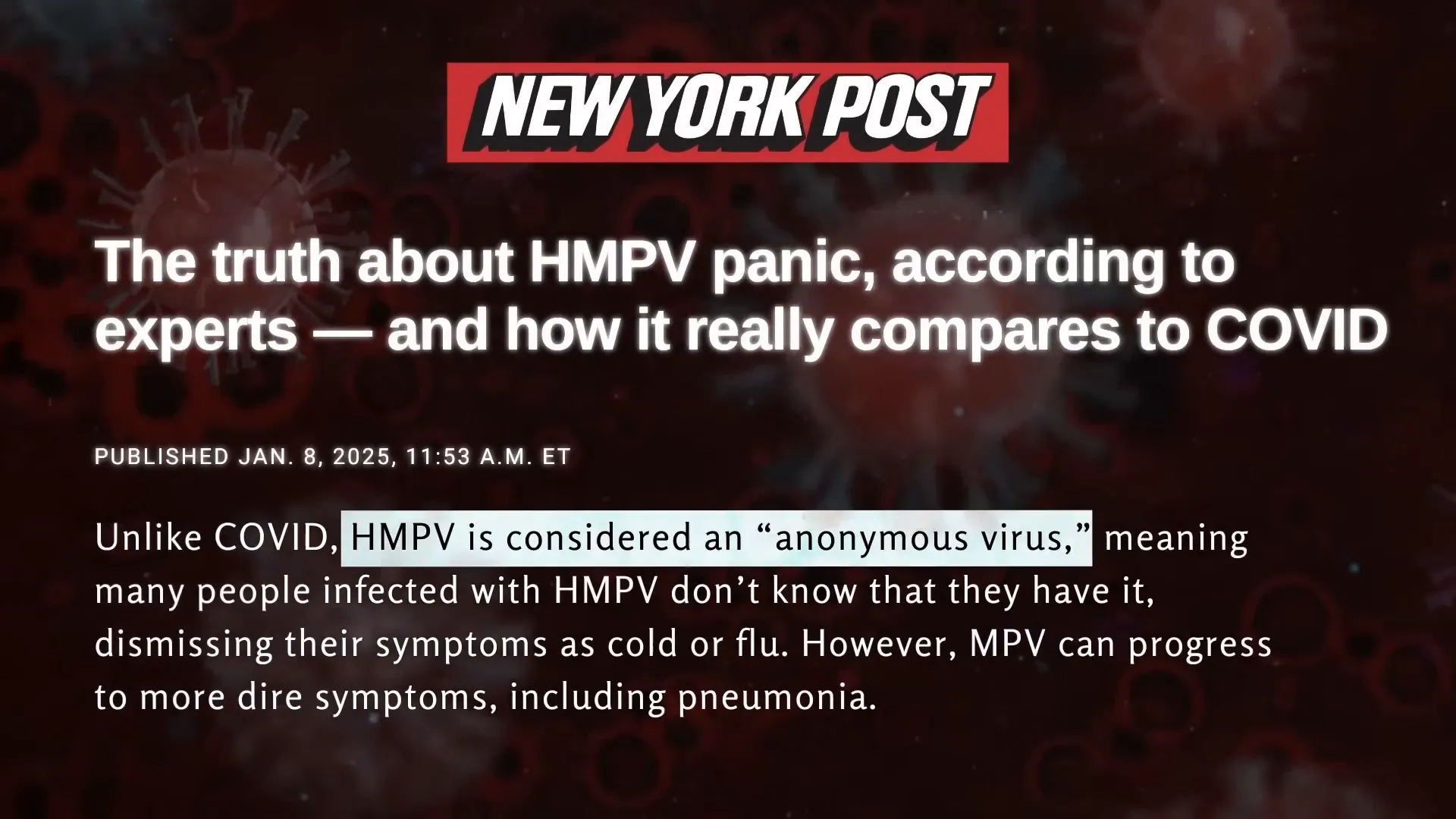
Now, it is not that this virus was hidden for so many years and suddenly started infecting people in China in 2025. No, this virus was active every season. When people get infected with this virus, they assume that they have a common cold.
And within a few days, the symptoms go away on their own. They may not even know that they had the HMPV virus. Because it is also called the Anonymous Virus. It is a respiratory virus. That is why its symptoms are similar to the common cold and influenza.
To be precise, those who get infected with this virus may experience fever, cough, runny nose and some difficulty breathing. The incubation period of this virus is around 3-6 days. This means that if you get infected with this virus, it can take 3-6 days for symptoms to appear.
Once you get sick, the severity of the illness and its duration depend on how severe the infection is and your overall health. Children and the elderly can suffer from more serious complications such as pneumonia. Interestingly, according to Professor Paul Hunter of the University of East Anglia in the UK, almost every child under the age of 5 has already been infected with HMPV at least once.
After that, they often suffer from re-infections throughout their lives. The disease is very common. This virus spreads in the same way as the common cold and flu. Through droplets released when an infected person coughs or sneezes. Or if an infected person touches a surface after touching their mouth, nose or eyes, it can spread to you if you touch that contaminated surface.
This will help you understand what precautions you should take to protect yourself from this virus. According to Director General of Health Services Dr. Atul Goel, proper distance should be maintained with people infected with HMPV. Always cover your nose and mouth when coughing or sneezing, or if you do not have a handkerchief or similar, use your elbow when coughing or sneezing and cover your nose and mouth.
Many people use their hands, but this is wrong, because then the droplets released will fall on your hands, the same hands with which you hold handles or press buttons in public places.
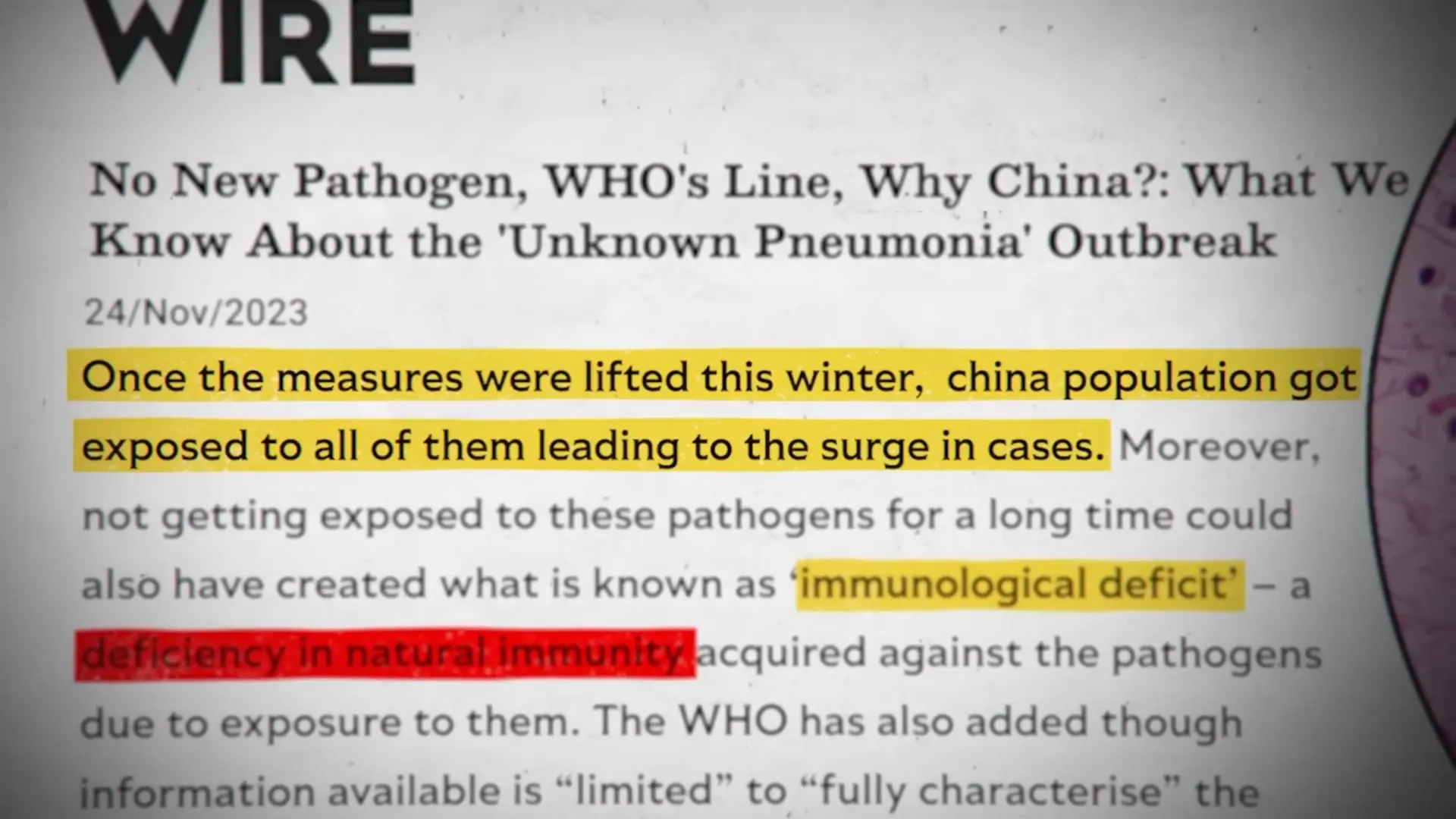
This is a general advice, and it is still effective even if you have a common cold. Always cough or sneeze into your elbow, and wear a mask in public if you go out in an infected state.
Also, wash your hands regularly, regardless of whether you are infected or not. Even if you are not infected, regular hand washing significantly reduces your chances of getting infected.
Since your hands often touch your mouth or nose and you touch various surfaces in public, it protects you from any infection. In terms of treatment, most healthy people will not need to do anything extra. Drink water,
and stay hydrated, rest at home. And for most people,
within 5-7 days or 7-10 days, it will go away on its own.
This is problematic for those who have a weakened immune system due to other diseases or age. They can suffer from serious complications and be hospitalized. Actually, how deadly is this virus?
And is it necessary to be afraid of it? Let’s talk about its mortality rate later in the video. Because before that, I want to tell you that there is no vaccine for this HMPV virus. Even though it was discovered 24 years ago, no vaccine has been developed. Not for lack of trying. Many researchers tried to develop vaccines, but there were problems with the safety and effectiveness of the vaccines.
Some vaccines were tested on animals, but in many cases where animals were given the vaccine, their lung inflammation worsened. It did not reach human trials. First, for safety reasons, and second, there is little long-term immunity. The common cold is something that everyone suffers from once or twice a year. Do you know why?
Because the common cold is not caused by a single virus. There are 200 different viruses that can cause the common cold. Also, these viruses are constantly changing, so any immunity you develop does not protect you in the long term.
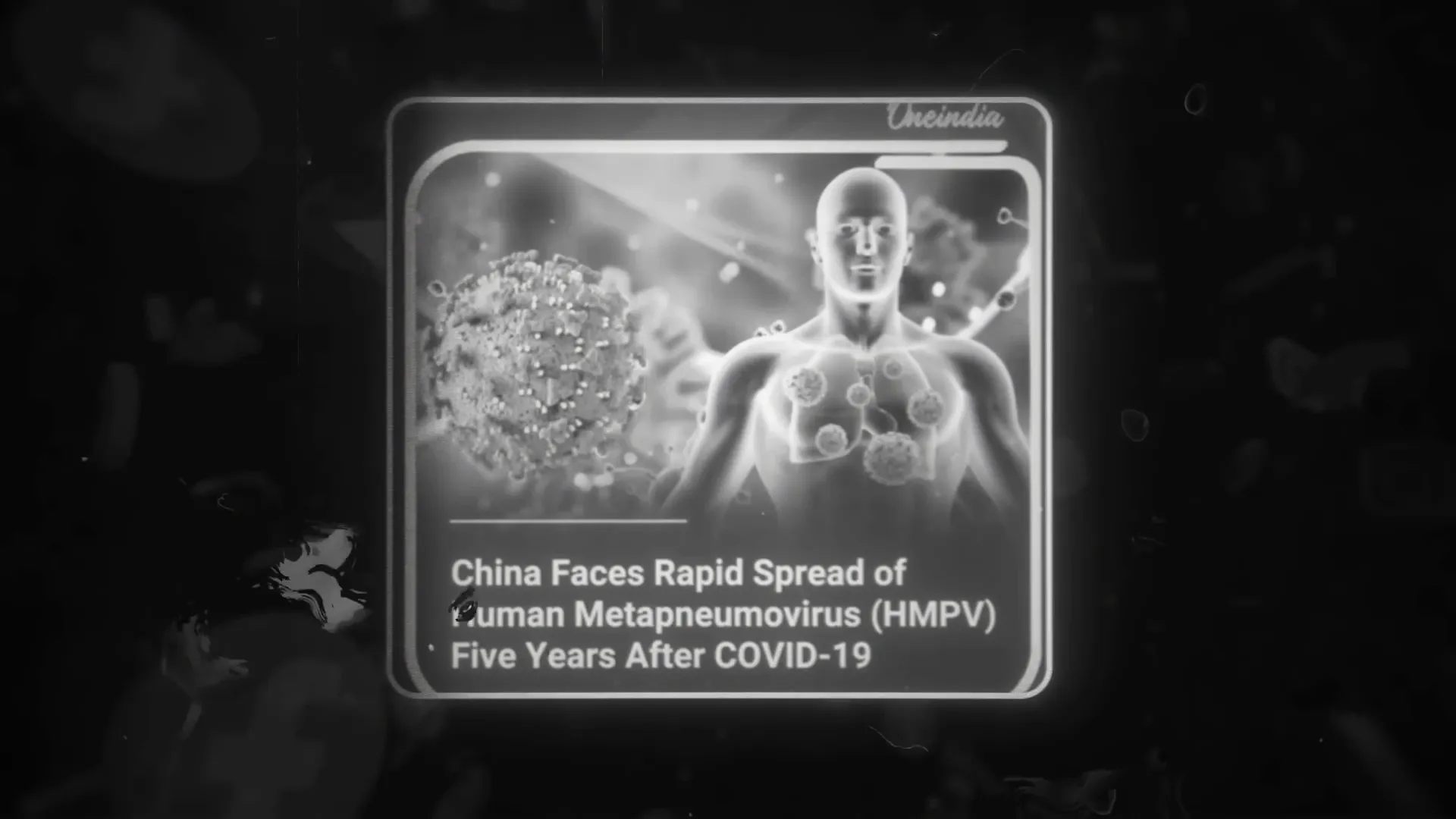
This is why there is no vaccine to prevent the common cold. But don’t worry, because many scientists believe that occasionally getting mildly sick is a good way to keep your immune system active and responsive.
So the question is, if ‘this is not a problem, what about China? China’s National Administration of Disease Control and Prevention recently admitted that respiratory infections, including HMPV, are on the rise in China.
But China’s Foreign Ministry said the spread of respiratory diseases is lower than last year. Experts say that outbreaks at this stage are not unusual. In winter, many countries experience a bad flu season, with significant populations contracting the flu. Similarly, experts say that China is also experiencing a bad HMPV season. Now, the Indian media has exaggerated the news.
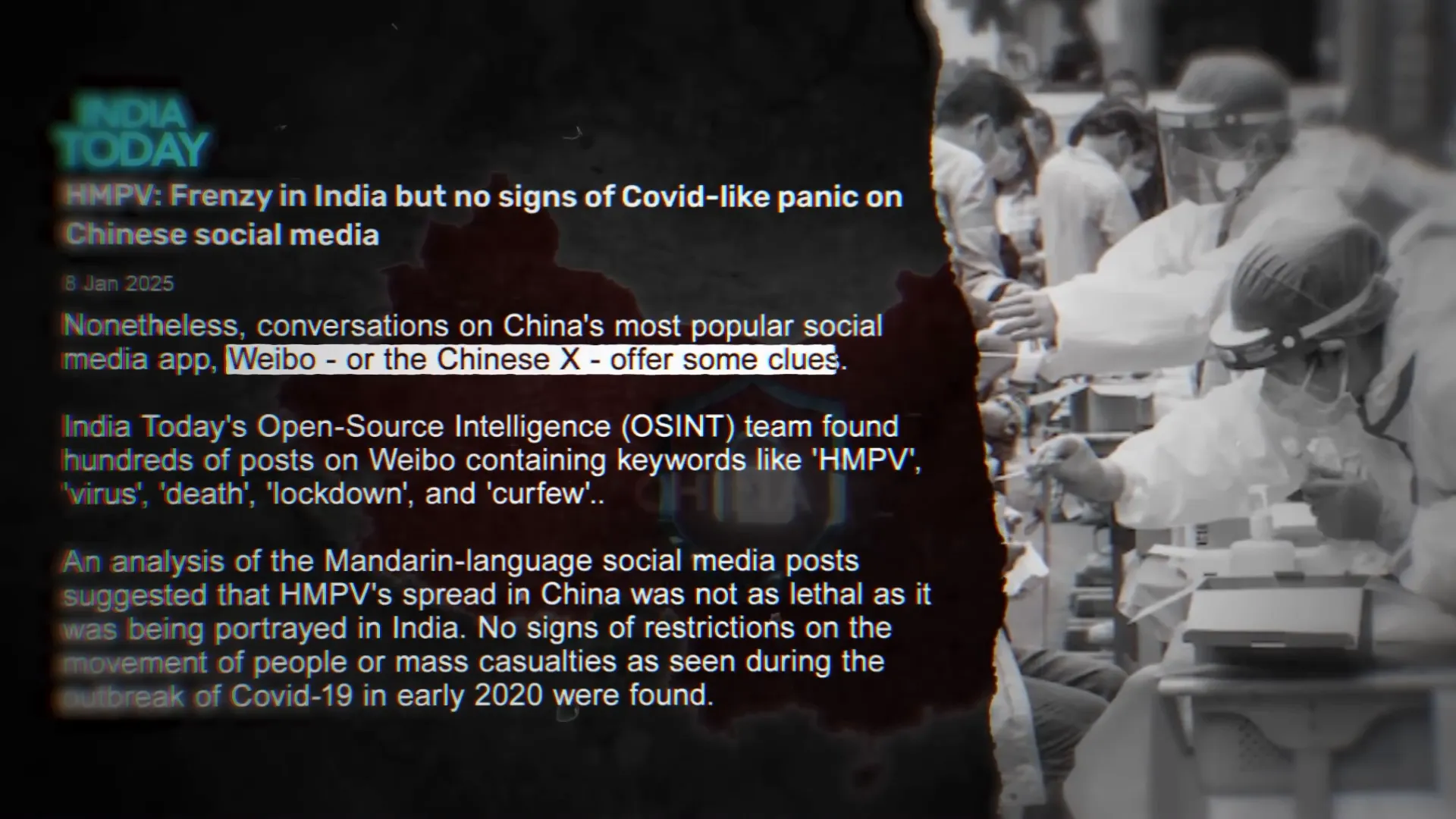
As if this is the beginning of the next global pandemic and the world will be under lockdown again. “The situation is going to heat up again.” “Because a new virus, HMPV, is wreaking havoc in China.” “There will be another lockdown.”
“After Corona, a virus called HMPV” “is raising concerns every day.” “The world is panicking about the Chinese virus.” Each individual case is being reported. First HMPV case in Bengaluru. A 3-month-old and an 8-month-old baby have tested HMPV positive. “A case of HMPV has now been detected in an 8-month-old baby in a private hospital in Bengaluru.”
In both cases, there was no history of international travel. These children had never travelled internationally. This once again proves that this is not a new disease. After this, one case was reported in a 2-month-old baby in Gujarat and two cases in Tamil Nadu. Then, an 80-year-old man in Gujarat also tested positive for HMPV. But, in all these cases, none of the infected people had travelled outside India.
Former WHO chief scientist Soumya Swaminathan said that HMPV has been infecting Indians for many years, but it has not been discussed much. Now people are talking about it. The media has blown it up so people are shocked. “I think people have not heard much about it.” “So, perhaps, it has come as a bit of a shock.” “And it is all local.” “It is not that it came from outside or from China.”
“It has been recurring in India for many years.” He also said that counting the number of people infected with HMPV is pointless, it serves no purpose. But there is still another question, why did news from China gain so much popularity in 2025? In part, this is due to China’s zero Covid policy. When Covid-19 broke out in China, China imposed a very strict lockdown across the country.

This lockdown was stricter than in other countries and was in force for a long time. This meant that Chinese residents had not been exposed to Covid for years. Not only Covid, they had not been exposed to other respiratory viruses and bacteria. For years, there was nothing to keep their immune systems active and responsive.
The winter of 2023 was the first in China after the lockdown was properly lifted. And so the Chinese population was suddenly exposed to numerous viruses and bacteria. And together, various types of infections appear because due to the lack of contact with these pathogens for a long time, an immunodeficiency develops, that is, a deficiency in their natural immunity.
This is why last winter, the number of flu cases in China increased greatly. This year, the respiratory illness has surged again, but not as much as last year. The World Health Organization has not declared HMPV infection a global health emergency, but it is closely monitoring the situation. The Wire reported that the WHO has not yet reported any mutations in HMPV, so a major outbreak is unlikely.
The Guardian claims that experts say that HMPV is not a virus like Covid. It has been around for decades. Therefore, people have already developed a certain level of immunity against it. Those of you watching this video are more likely to have already developed some immunity to the HMPV virus. Dr. Anish, Nodal Officer, Kerala One Health Centre, said that when children are 5 years old or above, they develop immunity to the virus. Dr. Gagandeep Kang said that reinfection with this virus is possible, but it is usually a mild infection.
It becomes serious in very young children or in those who have damaged lungs, chronic obstructive pulmonary disease (COPD) or a weakened immune system. Other people may suffer from a cough for a long time, but there is no reason to worry.
So how serious is it? According to a study published in the medical journal The Lancet, in 2018, 16,100 people died from HMPV, of which 65% were children under 6 months of age. This means that most of the people who died from this virus were children under 6 months of age. According to the paper, due to HMPV, children under 1 year of age are most at risk.
The actual number of deaths due to HMPV, its exact mortality rate, is difficult to calculate because the data for many respiratory diseases match it. But WHO spokeswoman Margaret Harris said the risk of death from HMPV is ‘very, very low.’ Small. But children, children under 1 year old, have delicate airways. HMPV can block them. And their immune systems are also weak. For these children, it is difficult to fight this virus. If you compare this to Covid, once someone gets Covid, they have a 0.28% chance of dying. This is called the ‘crude mortality rate’.
If 100,000 people get Covid, 289 will die. Obviously, this is a ‘global average’. The exact rate depends on where you live, your health, access to hospitals and hospital facilities. If this rate is compared to the flu or influenza, if 100,000 people get influenza, only 1.8 of them will die.
The mortality rate is 0.0018%. If we combine the data for influenza and pneumonia, then on average 14.1 out of 100,000 people die. The mortality rate is 0.014%. But we don’t know the exact rate of HMPV, but looking at the numbers, you can guess that the mortality rate of HMPV will be much closer to that of influenza and pneumonia and much higher than Covid.
Overall, it is safe to say that the panic on Indian social media about this virus is largely exaggerated. It is true that it is difficult to get reliable information from China due to high censorship. But India Today analyzed the Chinese social media website Weibo to find out what the Chinese people are saying about the virus and HMPV.
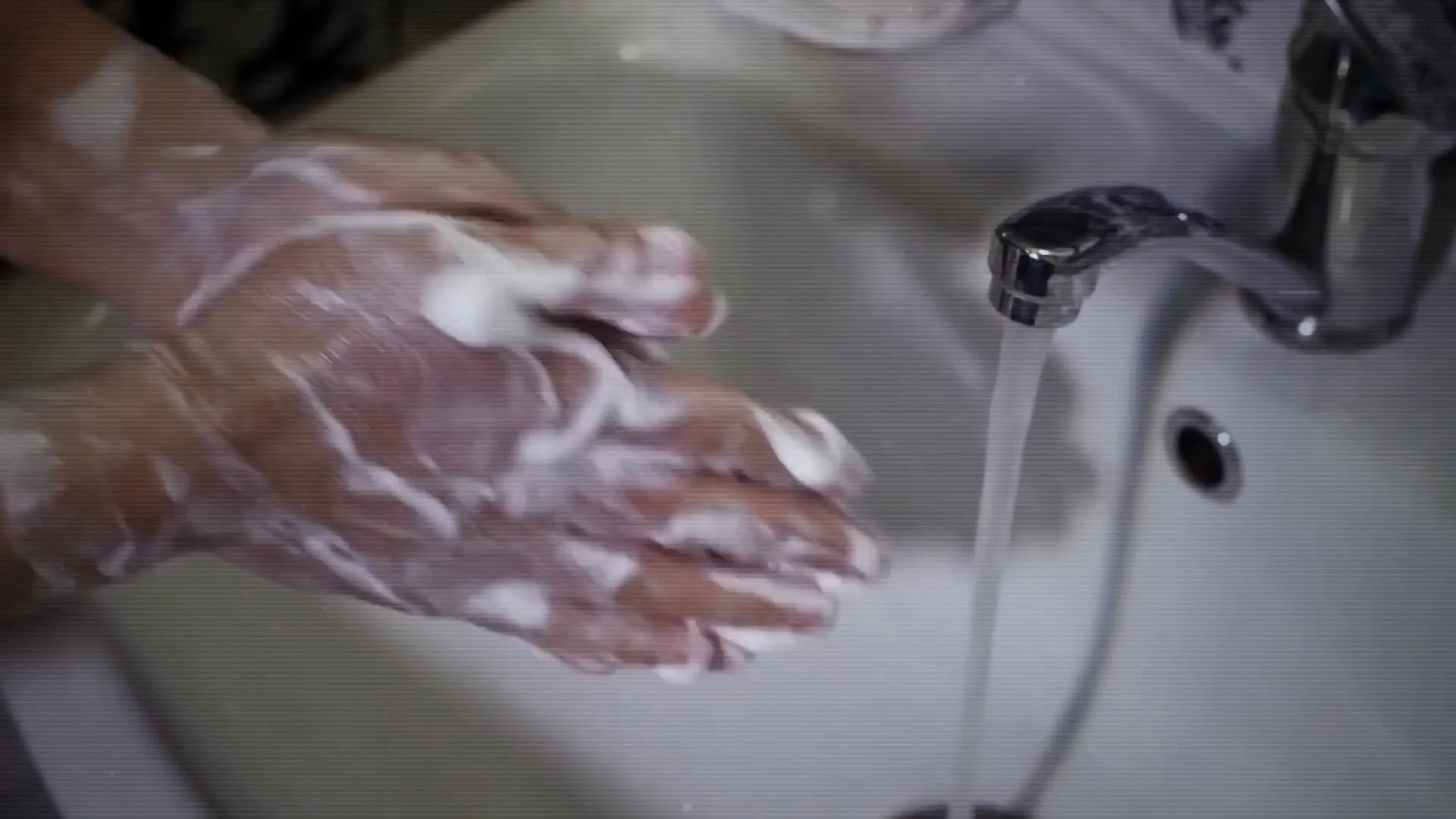
They searched for keywords like HMPV, virus, death, lockdown and curfew and according to their analysis, it was found that the infection in China is not as severe as it has been in India. There is no sign of lockdown restrictions. China also reported that the total number of HMPV cases is lower than in previous flu seasons.
The panic about HMPV in India has led to panic selling in the stock market. And investors have lost about $11 trillion. So don’t panic. Follow the regular health precautions that I have told you.
And pay attention to the fact that there are many more serious issues that are not being discussed in our country. Like this issue, the removal of names from the voter list.
This video discusses how elections are being rigged and how you can protect your right to vote. This is an important video, click here to watch it. Thank you very much!
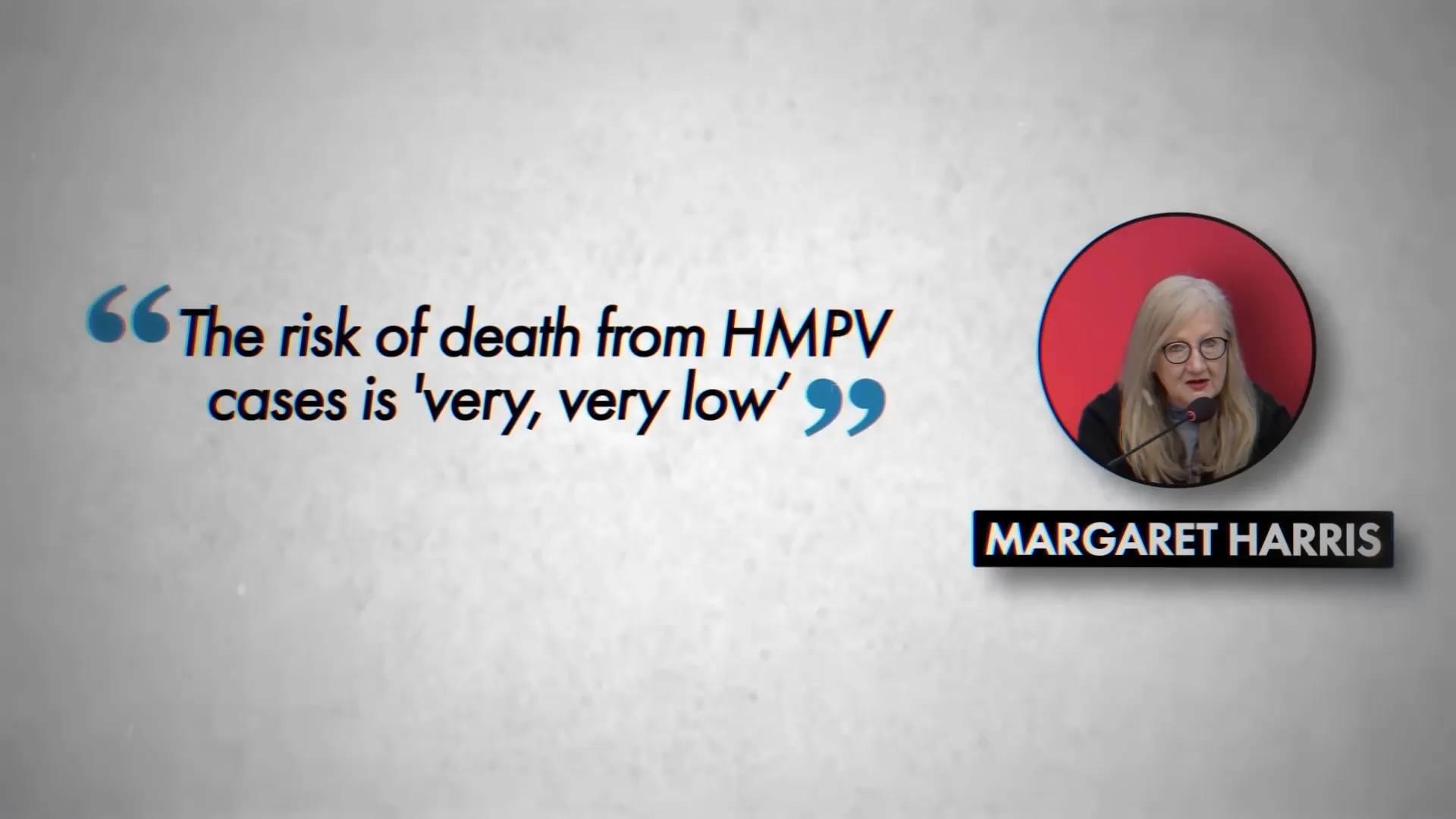
Precautions to Take
To protect yourself from HMPV, the same precautions apply as for any respiratory virus:
- Maintain distance from those who are sick.
- Cover your mouth and nose with a tissue or your elbow when coughing or sneezing.
- Wash your hands regularly, especially after touching surfaces in public places.
- Wear a mask in crowded areas if you’re feeling unwell.
Frequently Asked Questions (FAQ)
What are the symptoms of HMPV?
Symptoms include fever, cough, nasal congestion, and wheezing. Most cases are mild and resolve on their own.
Can adults get HMPV?
Yes, adults can contract HMPV, but it usually results in milder symptoms compared to children.
How can I prevent HMPV infection?
Practice good hygiene, including regular handwashing, wearing masks in crowded spaces, and maintaining distance from sick individuals.
Conclusion :
In conclusion, while the HMPV virus is a valid concern, the panic surrounding it is largely unfounded. By practicing good hygiene and staying informed, we can navigate this seasonal virus with confidence. Thank you for reading!


